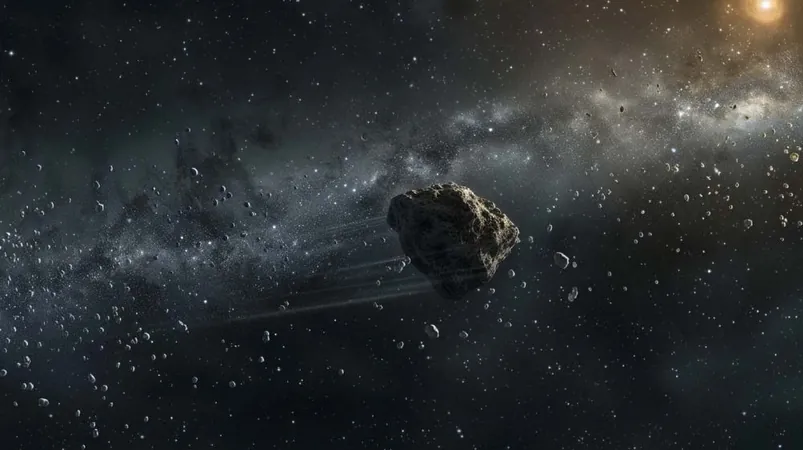
BREAKING: NASA Identifies Two Distinct Populations of Mysterious "Dark Comets"!
2025-01-03
Author: John Tan
NASA's Groundbreaking Discovery
In a groundbreaking revelation, NASA scientists have uncovered the existence of two unique populations of "dark comets" in our Solar System, doubling the number of known objects in this intriguing category. This discovery adds a whole new layer of complexity to our understanding of these enigmatic celestial bodies, known for their strange behavior that defies conventional classification.
The Saga Begins
The saga of dark comets began when the Pan-STARRS-1 telescope in Hawaii made history on October 19, 2017, by detecting the first interstellar object, 1I/2017 U1 ‘Oumuamua, which seemed to act like a comet but appeared as an asteroid. This perplexing behavior raised numerous questions among scientists, leading to the identification of similar objects that lack the typical comas associated with comets but exhibit unexplainable acceleration, attributed to outgassing of volatile materials.
Groundbreaking Study
A recent study, supported by NASA and led by Darryl Z. Seligman from the Carl Sagan Institute, along with a diverse team from esteemed institutions like the European Space Agency and NASA's Jet Propulsion Laboratory, has brought to light seven additional dark comets. This brings the total count to fourteen, confirming their status as a distinct category of celestial objects.
Two Distinct Populations
The team discovered that these dark comets can be divided into two categories based on their characteristics. The first group, identified as “outer dark comets,” consists of larger bodies measuring hundreds of meters across, inhabiting the fringes of our Solar System. They have highly elliptical orbits, similar to the asteroid families found near Jupiter. The second category, dubbed “inner dark comets,” includes smaller bodies—less than tens of meters across—traveling in nearly circular orbits within the inner Solar System, notably encompassing the paths of Mercury, Venus, Earth, and Mars.
Implications for Life on Earth
But what makes this discovery truly fascinating is the questions that arise regarding the origins, behaviors, and compositions of these dark comets. There is particular interest in whether they harbor water ice, which could hold the key to understanding how life-sustaining materials were distributed throughout our Solar System eons ago. Seligman emphasized the implications of this research: “Dark comets are a new potential source for having delivered the materials to Earth that were necessary for the development of life. The more we can learn about them, the better we can understand their role in our planet’s origin.”
Conclusion
The study of dark comets not only enriches our understanding of the Solar System but invites us to consider how these hidden travelers have influenced the very building blocks of life on Earth. As scientists delve deeper into this celestial mystery, the implications of their findings could reshape our comprehension of life beyond our planet.
Stay Tuned!
Stay tuned as more research unfolds, revealing the secrets of the cosmos through these mysterious dark comets!

 Brasil (PT)
Brasil (PT)
 Canada (EN)
Canada (EN)
 Chile (ES)
Chile (ES)
 Česko (CS)
Česko (CS)
 대한민국 (KO)
대한민국 (KO)
 España (ES)
España (ES)
 France (FR)
France (FR)
 Hong Kong (EN)
Hong Kong (EN)
 Italia (IT)
Italia (IT)
 日本 (JA)
日本 (JA)
 Magyarország (HU)
Magyarország (HU)
 Norge (NO)
Norge (NO)
 Polska (PL)
Polska (PL)
 Schweiz (DE)
Schweiz (DE)
 Singapore (EN)
Singapore (EN)
 Sverige (SV)
Sverige (SV)
 Suomi (FI)
Suomi (FI)
 Türkiye (TR)
Türkiye (TR)
 الإمارات العربية المتحدة (AR)
الإمارات العربية المتحدة (AR)